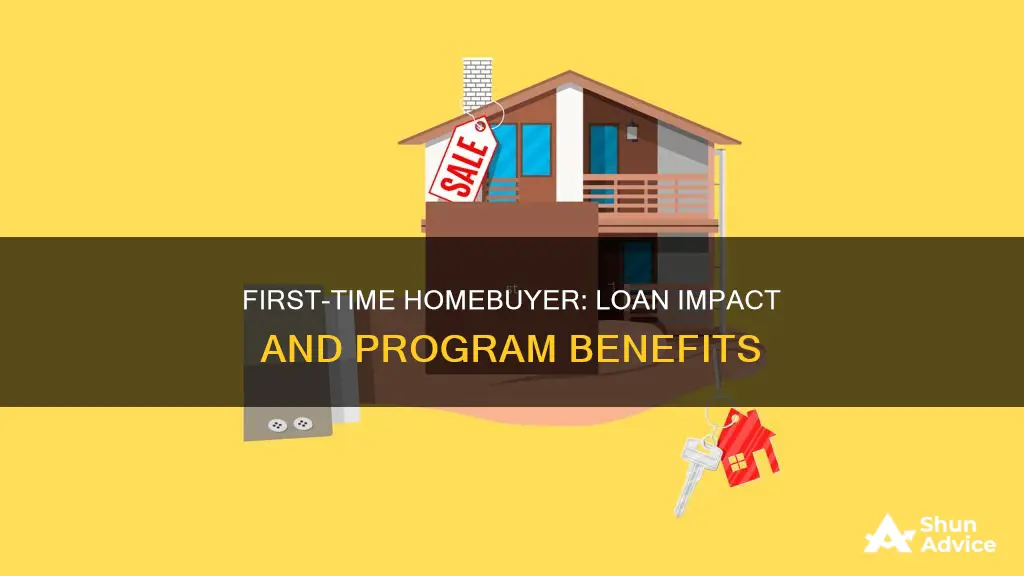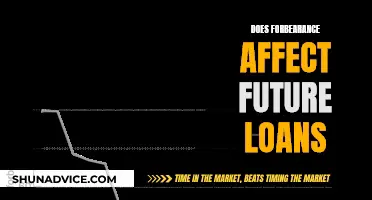
First-time homebuyer programs are designed to help people get on the property ladder. They can include down payment assistance, low-interest or interest-free loans, rebates, and grants. These programs are available at the federal, provincial, and municipal levels, and each has its own eligibility criteria and requirements. For example, some programs require buyers to take financial counseling classes, while others have income and asset caps. While these programs can make buying a home more accessible, they may also come with higher interest rates and more complex processes than conventional loans.
| Characteristics | Values |
|---|---|
| Down payment | 5% for homes under $500,000, 10% for the portion of the price between $500,000 and $1.5 million, and 20% for homes priced above $1.5 million. |
| Interest rates | Often higher than conventional rates |
| Availability | Different programs are available in different states and provinces. |
| Eligibility | First-time homebuyers with a household income of less than $120,000 (or $150,000 in Toronto, Vancouver, and Victoria). |
| Benefits | Reduced monthly mortgage payments, assistance with down payments, and more favorable mortgage rates. |
| Repayment | The loan must be repaid within 25 years or when the home is sold, whichever comes first. |
| Credit history | A strong credit history helps secure a favorable mortgage rate, but newcomers often start without a domestic credit record. |
What You'll Learn

First-time homebuyer programs: interest rates and costs
First-time homebuyer programs are designed to help those who have never owned a home, or not for some time, to get onto the property ladder. These programs can help with the costs of closing and the down payment through grants and low-interest loans.
In the US, each state operates a housing finance authority (HFA) to encourage homeownership. Conventional loans are the most popular type of mortgage, requiring only 3% down. This makes them an attractive option for first-time buyers who may have limited savings. In Canada, the First Time Home Buyer Incentive (FTHBI) was a federal program that offered an interest-free loan of between 5-10% of the home's total cost. This has been discontinued as of March 31, 2024. However, there are still other programs available, such as the RRSP Home Buyers' Plan (HBP), which allows someone saving for a home to deposit the maximum amount for their RRSP contribution annually. There are also provincial programs, such as in Quebec, which offers an additional tax credit of up to $750 for first-time buyers.
Many first-time buyer programs offer a lower-cost first mortgage to help purchase the home, and then a second mortgage to cover the down payment and closing costs. These second mortgages can be structured as low-interest loans, deferred-payment loans, or forgivable loans. Low-interest loans are below-market-rate loans that are repaid over a few years. Deferred-payment loans are no-interest loans repaid when the home is sold or the first mortgage is paid off. Forgivable loans are second mortgages that are forgiven as long as the buyer keeps the home as their primary residence for a certain period and stays up-to-date with mortgage payments.
It is important to note that not all lenders can access first-time buyer programs, and some may actively discourage their use. It is worth shopping around and speaking to a mortgage broker to understand what programs are available and which is the best option for your circumstances.
FedLoan Rehabilitation: What Are Your Options?
You may want to see also

Federal and provincial programs: eligibility and incentives
In Canada, there are several federal and provincial programs and incentives for first-time homebuyers. These include tax credits, rebates, grants, and programs that can help with down payments. Here are some of the key ones:
Federal Programs:
- First-Time Home Buyer Incentive (FTHBI): This program offered an interest-free loan of between 5% and 10% of the home's total cost, which needed to be repaid within 25 years or when the home was sold. The government shared the equity built up, so the amount repaid depended on the home's value at the time of repayment. However, this program was discontinued on March 31, 2024.
- First-Time Home Buyer Act of 2024: This act provides a federal tax credit of up to $15,000 that can be used for the down payment and closing costs or received as a tax refund.
- Downpayment Toward Equity Act: This act provides a cash grant of up to $20,000 for first-generation, first-time homebuyers, with an additional $5,000 for buyers from disadvantaged backgrounds.
- First Home Savings Account (FHSA): This program allows eligible individuals to save up to $5,000 per year tax-free for their first home purchase.
- Home Buyers' Plan (HBP): This program allows first-time homebuyers to withdraw up to $60,000 from their Registered Retirement Savings Plan (RRSP) for a down payment. The money must be repaid to the RRSP within 15 years.
- RRSP Home Buyers' Plan (HBP): This plan allows someone saving for a home to deposit the maximum amount for their RRSP contribution annually.
- The DASH Act: This act provides a $15,000 federal income tax credit for low- to moderate-income earners who meet residency requirements and purchase a home within a certain price limit.
- The HELPER Act: This act allows teachers, firefighters, and law enforcement officers to obtain mortgages without a down payment or monthly mortgage insurance.
Provincial Programs:
- Quebec offers an additional tax credit of up to $750 for first-time homebuyers.
- Ontario has the Land Transfer Tax Refund for First-Time Homebuyers, which provides a rebate on the land transfer tax.
- Other provinces also offer land transfer tax rebates for first-time homebuyers.
It is important to note that each program has its own specific eligibility criteria, and it is recommended to consult a mortgage broker or refer to specific program guidelines to understand the requirements and incentives offered.
Renovation Loans: Fannie Mae's HomeStyle Loan Option
You may want to see also

Down payment rules and requirements
The down payment is a crucial aspect of purchasing a home, and first-time homebuyer programs can influence the required amount. In Canada, for instance, the minimum down payment is typically 5% for homes under $500,000, 10% for homes between $500,000 and $1.5 million, and 20% for homes over $1.5 million. These rules apply to all homebuyers, but first-time buyers have the option to access programs that can assist with their down payment.
The First-Time Home Buyer Incentive (FTHBI) was a federal program in Canada that provided an interest-free loan of 5-10% of the home's total cost. This loan had to be repaid within 25 years or when the home was sold, whichever came first. However, as of March 31, 2024, the FTHBI has been discontinued. This program was a shared-equity mortgage, meaning that the government shared in the gains or losses of the property value, up to a maximum of 8% per annum.
In the United States, various down payment assistance programs and grants are available, which can be especially beneficial for first-time homebuyers. These programs often have specific eligibility requirements, such as income limits, and may require the completion of homebuyer education courses. For example, the HomeFirst Down Payment Assistance Program in New York City provides a forgivable loan of up to $100,000 towards the down payment or closing costs. Similarly, the Arizona Department of Housing's Pathway to Purchase program offers a grant of up to 10% of the loan amount or a maximum of $20,000 for down payment or closing costs.
It is important to note that the availability and specifics of first-time homebuyer programs can vary by state and province. For instance, in Minnesota, the first-time homebuyer program is considered a conventional loan without the "red tape" of an FHA or VA loan. On the other hand, a user from Philadelphia mentions that they used a first-time homebuyer program called "Right @ Home Loan," which offered no down payment and manageable monthly payments. Therefore, it is advisable to research the specific programs available in your desired location and carefully consider their requirements and potential impact on your loan.
FBI's Student Loan Program: Help or Hindrance?
You may want to see also

Loan repayment: timeframes and conditions
The Federal Housing Administration (FHA) has been helping homebuyers with modest means since 1934. Their programs are particularly relevant to first-time buyers who may struggle to qualify for a loan. Qualified applicants can put down a minimum of 3.5% as a down payment, and the FHA's credit qualifications are less strict than a bank's. The FHA also offers reduced closing costs and helps homeowners finance energy-efficient updates.
The U.S. Department of Agriculture's homebuyer assistance program is targeted at people who want to buy or upgrade homes in rural areas that are currently in poor condition. The program offers up to 100% financing for people who want to buy and upgrade a home or upgrade a home they already own. Loan applicants can have incomes up to 115% of the national average.
The U.S. Department of Veterans Affairs (VA) helps first-time homebuyers who are active-duty military members, veterans, and surviving spouses. These VA loans provide competitive interest rates and require no down payment. The VA guarantees part of the loan, and first-time homebuyers are not required to pay for private mortgage interest (PMI) or maintain a minimum credit score.
The Internal Revenue Service (IRS) offers a First-Time Homebuyer Credit for qualifying home purchases made between April 9, 2008, and December 31, 2008. This credit must be repaid over 15 years by increasing your federal income taxes by 6⅔% (or 1/15) of the credit amount for each taxable year. The repayment period begins with the second taxable year following the year of purchase.
For homes purchased in 2009 or 2010, the full amount of the credit must be repaid if the home is sold to a related party within 36 months of purchase, or if the home is destroyed and not replaced within two years. For qualifying purchases made after 2008, the repayment requirement of the credit is generally waived. However, if the home is disposed of or ceases to be the primary residence within 36 months of purchase, the credit repayment is accelerated.
In the case of a sale of the home to an unrelated person, the increase in tax due to accelerated repayment is limited to the amount of gain from the sale. If the home is sold at a loss or with no gain, the remaining annual installments may be reduced or eliminated. If the homeowner dies, any remaining annual installments are not due unless the credit was claimed on a joint return, in which case the surviving spouse must continue repaying their half of the credit.
FAFSA Loans: Do They Cover Summer Classes?
You may want to see also

Building credit history and improving eligibility
Building a good credit history is essential for first-time homebuyers to improve their eligibility for loans. A credit score is a combination of all the times you have used credit to pay for something, how much you have borrowed in the past, and your credit utilisation ratio. Lenders will consider your credit score, payment history, income, and employment history when reviewing your loan application.
To build your credit history, you can start by getting a few credit cards and using them wisely. Make timely payments and keep your debt ratio low. This process can take time, so it's advisable to start building your credit history early. Additionally, consider opening a secured credit card and making consistent payments for everyday expenses. This will help establish your creditworthiness over time.
It's important to note that a good credit score alone may not be sufficient to qualify for a mortgage. Lenders will also consider your income, employment history, and immigration status, if applicable. Most lenders will require proof of income, employment history, and, for newcomers, immigration status such as a permanent resident card or work permit.
To improve your eligibility for loans as a first-time homebuyer, it's advisable to explore different loan programs and grants available in your city or town. These programs often have lower down payment requirements and are designed to eliminate barriers to homeownership. For example, the Federal Housing Administration (FHA) offers loans with down payments as low as 3.5%, and the Department of Veterans Affairs (VA) offers loans with no down payment required in some cases. Additionally, some states and local governments offer resources and incentives specifically for first-time homebuyers.
While building your credit history and exploring loan programs, it's essential to start saving for the down payment, closing costs, and other expenses associated with buying a home. This process can be financially challenging, but first-time homebuyer programs and grants can provide significant assistance. By combining a strong credit history with knowledge of available loan programs and grants, first-time homebuyers can improve their eligibility for loans and take a significant step towards achieving their dream of homeownership.
FAFSA and Loans: What You Need to Know
You may want to see also
Frequently asked questions
The First-Time Home Buyer Incentive (FTHBI) was a program offered by the federal government to help first-time homebuyers with their down payments. The program was discontinued on March 31, 2024.
There are several other programs available for first-time homebuyers, including:
- Land transfer tax reductions and loans (Ontario)
- Home Buyers Plan (Ontario)
- First Home Savings Account (Ontario)
- Rural Homeownership Program (Manitoba)
- BC Home Owner Mortgage and Equity Partnership Program (British Columbia)
- First Place Home Ownership Program
To be eligible for the First Home Savings Account, you must be a first-time homebuyer and a resident of Canada. You can deposit up to $8,000 annually, up to a maximum of $40,000.
First-time homebuyer programs can impact loans in a few ways. Some programs may require you to take a class or receive financial counseling before purchasing a home. Additionally, some programs may have specific requirements for income, assets, and purchase price. It's important to note that not all lenders offer these programs, so it's worth shopping around and speaking to a mortgage broker to understand your options.
In Canada, the down payment for homes less than $500,000 is 5%. For homes between \$500,000 and $1.5 million, the down payment is 10% on the amount between $500,000 and $1.5 million. For homes priced above $1.5 million, the down payment is 20%.







